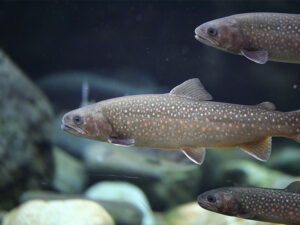Differences Between Fishing Tackle Shops in Japan and Other Countries
From my personal experiences visiting fishing tackle shops in many countries, I see that fishing tackle shops in Japan stand out for their meticulous retail presentation, customer engagement, and operational efficiency. While tackle shops worldwide may carry similar product categories, rods, reels, lures, lines, and accessories, Japanese stores often take a more refined, systematized approach to merchandising. Several key differences highlight how Japanese shops distinguish themselves:
1. Abundant Use of POP (Point-of-Purchase) Displays
Japanese tackle shops utilize eye-catching POP materials extensively. These include handwritten product explanations, angler testimonials, staff picks, QR codes linking to video content, and detailed usage instructions. The aim is to provide rich product context directly at the shelf, even without staff intervention. In contrast, many overseas shops rely more on brand packaging alone or minimal signage, resulting in less product education at the point of sale.
In Japan these POPs are often provided by suppliers, brands or manufacturers. In addition to shop original POPs, these additional materials give more variety and richer information for customers.
2. Cleanliness and Visual Order
Clean, well-lit, and systematically arranged, Japanese tackle shops often resemble high-end electronics retailers more than the one you imagine for a typical outdoor gear outlet. Aisles are spotless and products are neatly aligned. This contrasts with many Western shops, especially in rural areas or independent stores, where a more casual or cluttered presentation is common. The Japanese focus on cleanliness reinforces product value and elevates the customer experience.
3. Video Signage and In-Store Screens
It is common in Japan to find monitors throughout tackle shops playing product introductions, rigging tutorials, or fishing footage featuring specific lures. This not only captures customer attention but also serves an educational purpose, bridging the gap between marketing and field application. Video content plays a smaller role in most overseas tackle shops, where static displays and brochures are more common.
In fishing marketing, it is key to convince customers about the effectiveness of the product for your catch. In the past, this role was in the hands of the shop owners and shop staff. Now, in many Japanese retailers, this role is done by POP and in-store visual presentations.
4. Strategic Use of Shelf Ends and Promotional Zones
Japanese shops make exceptional use of “end” of shelves (end caps, or the ends of aisles) for promotional displays. Seasonal themes, limited-edition items, new arrivals, and store-exclusive collaborations are often featured here. These areas are actively managed and frequently rotated to maintain customer interest. In many international stores, shelf ends are either underutilized or used for overflow stock rather than as active promotional items.
5. Focus on Operational and Merchandising Efficiency
Japanese tackle shops are designed with both customer flow and stocking efficiency in mind. Shelving systems often match product dimensions precisely, and inventory is kept dense but organized. The use of sliding shelves is coming from this idea. Conceptually, restocking is simplified by standardized layouts, however, it is hard work for staff to rearrange the hooks on shelves, since they know it makes the difference in the sales results. These stocking arrangements are oriented by easiness of customer purchase. Overseas stores may offer more open or rustic layouts but sometimes lack the same level of systematic inventory presentation.
Overall, Japanese tackle shops prioritize a retail experience that is visually clean, educational, and efficient. This reflects broader trends in Japanese consumer culture, attention to detail, quality presentation, and maximized use of space, making them a valuable reference for any fishing retailer aiming to elevate their in-store experience.
Here is the link to see what is Japanese shop looks like.


